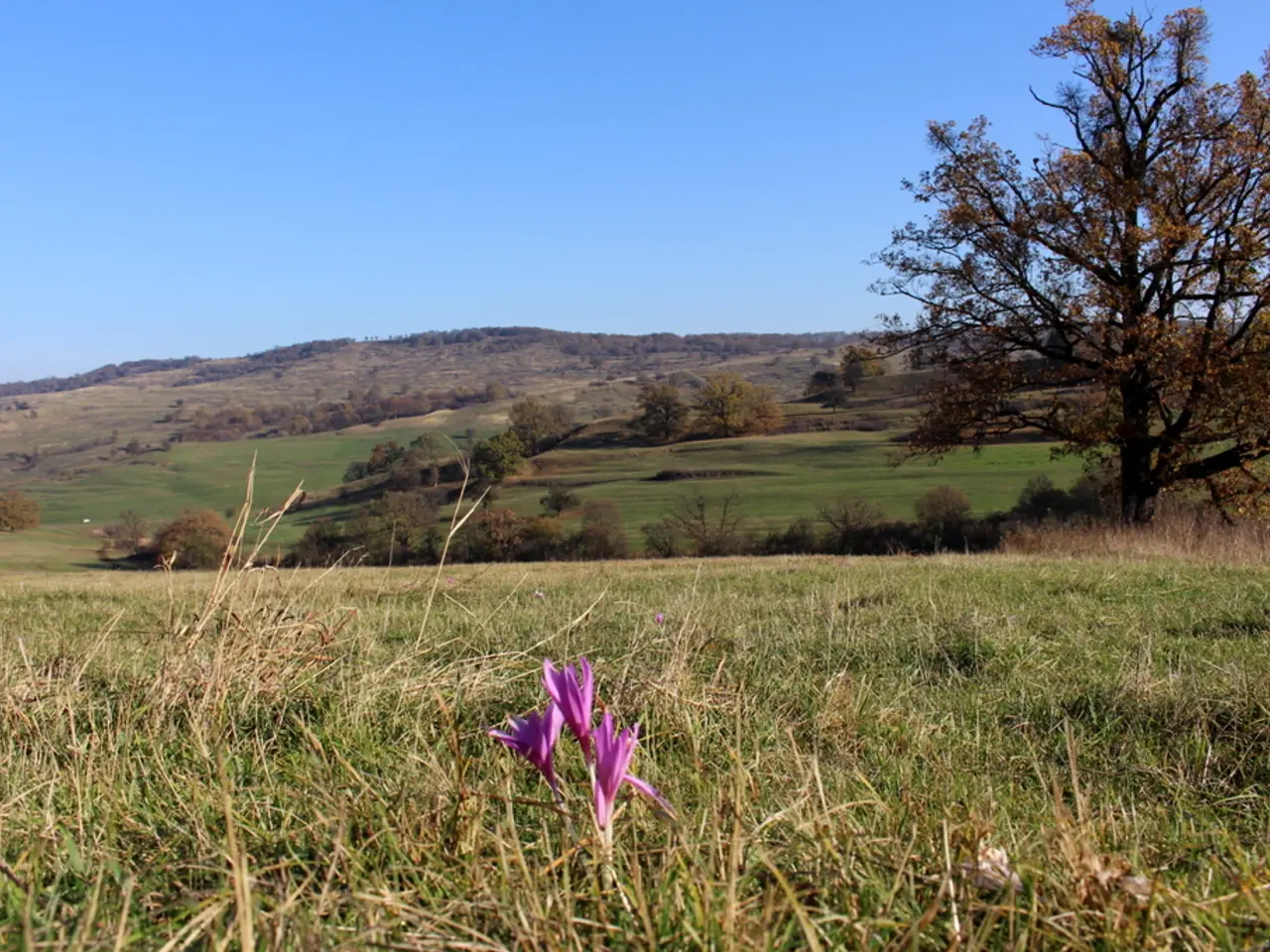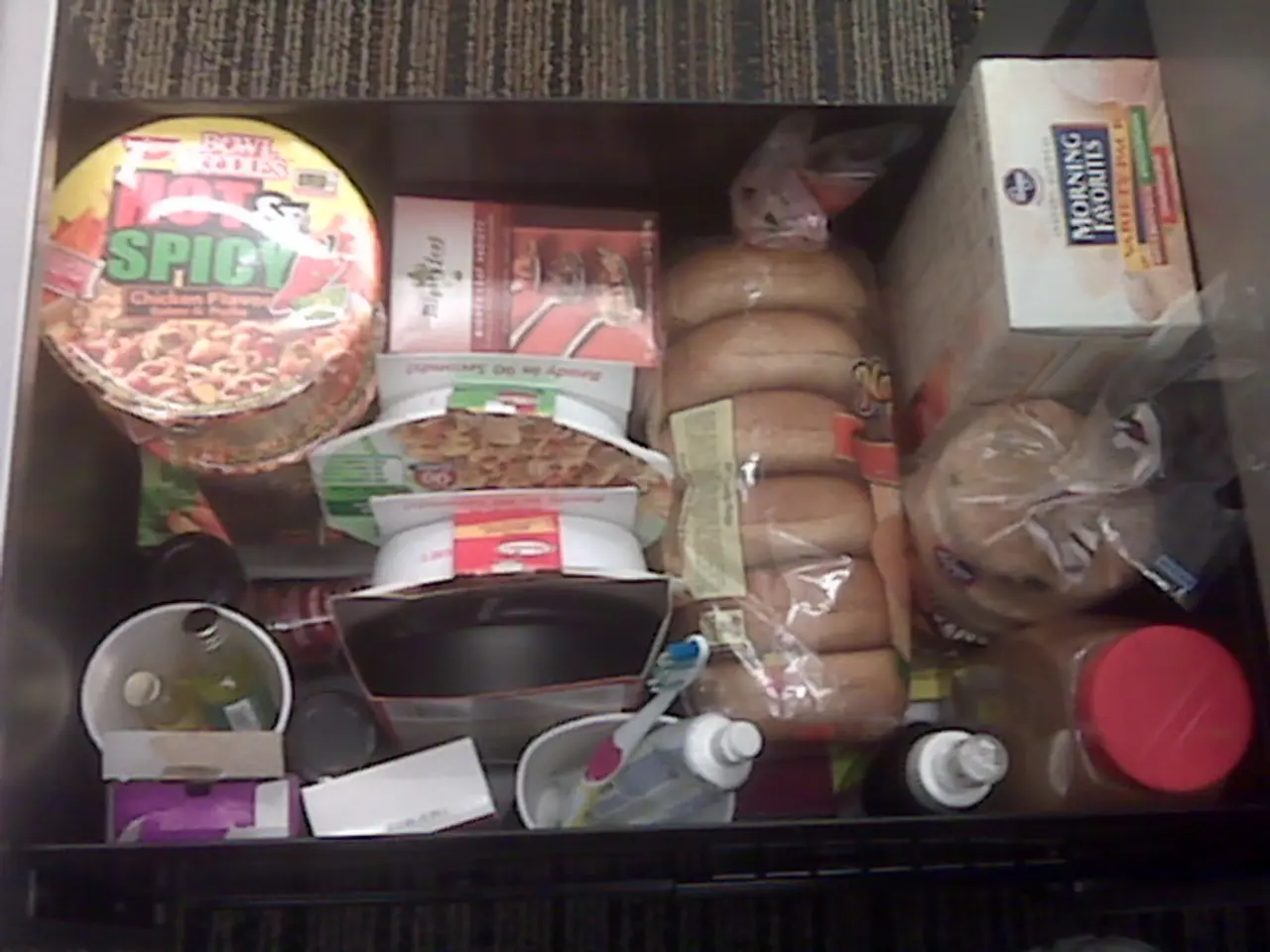Self-Propagating Perennials: Transform Your Garden with These 29 Species for an Abundant Appearance
Supporting Pollinators and Wildlife: A Guide to Low-Maintenance Perennial Plants
In the quest to create a garden that not only looks beautiful but also benefits the environment, these low-maintenance perennial plants are a fantastic choice. These eco-friendly options support bees, butterflies, birds, and other wildlife while requiring minimal effort from gardeners.
Coneflowers (Echinacea spp.)
These drought-tolerant, native wildflowers bloom in vibrant colours such as purple, pink, orange, and red. Coneflowers attract bees, butterflies, and seed-eating birds such as goldfinches and sparrows. They grow best in full sun and well-drained soil, and can naturalize over time by self-seeding.
Catmint (Nepeta x faassenii)
Known for long blooming lavender-blue or pink flowers and aromatic foliage, catmint is very easy to grow in USDA zones 4 to 8. It thrives in full sun with well-drained soil. Catmint plants grow up to 2 feet tall, spread moderately, and do well with neglect. Their small tubular flowers are highly attractive to bees, butterflies, and hummingbirds.
Purple Betony (Betonica officinalis)
A slow-growing perennial staying under 2 feet tall, purple betony is notable for flower stalks with alternating leaves and purple blooms favoured by bees and butterflies. It is drought-resistant and adaptable to various soils (including sand and clay) if drainage is adequate. It spreads slowly and can be started from seed in zones 4 to 8.
Carpathian Bellflower (Campanula carpatica)
Growing about 1 foot tall, these perennials produce blue, purple, or pink flowers attractive to hummingbirds. They are resilient to deer and rabbits and can be used as groundcover. While they prefer watering in dry spells, they tolerate a wide pH range and spread moderately by clumping.
Culver’s Root (Veronicastrum virginicum)
A native tall perennial (4 to 7 feet) with spikes of white to pale lavender flowers blooming mid to late summer, culver’s root provides essential nectar for bumblebees, butterflies, and beneficial flies. It grows best in full sun and well-drained soils and spreads slowly via rhizomes.
Coral Bells (Heuchera spp.)
These are mounding perennials with colorful foliage and small bell-shaped flowers rich in nectar, attracting hummingbirds and butterflies. Generally growing up to 2 feet tall, they grow relatively slowly and are suitable for containers or garden beds. They are hardy and spread modestly by clumping.
Black-Eyed Susans (Rudbeckia spp.)
Low-maintenance, drought-tolerant perennials that bloom bright yellow with seed heads favoured by goldfinches and chickadees, black-eyed Susans grow best in full sun and tolerate a variety of soil moisture levels.
Milkweed (Asclepias spp.)
Crucial for monarch butterflies as larval host plants, milkweed also provides birds with fluffy seed material for nesting. It grows robustly and spreads by seed and rhizomes.
These perennials grow in full sun or partial shade with a preference for well-drained soils but vary in moisture tolerance. They spread through a combination of seed self-sowing, clumping rhizomes, or slow stolon growth. Their growth habits range from low groundcovers to medium-height mounded plants, to tall spikes and stalks. These perennials generally require minimal watering once established and benefit from occasional mulching. Shearing certain plants like catmint after flowering can promote rebloom.
In summary, species like coneflowers, catmint, purple betony, culver’s root, and coral bells offer low-maintenance, eco-friendly ways to support pollinators and birds. They typically grow well in a range of soils with moderate watering, spread mainly by seed or clumping, and provide nectar, seeds, and nesting materials critical for wildlife.
- Incorporating low-maintenance perennials like coneflowers, catmint, purple betony, culver’s root, and coral bells into your garden creates a visually appealing space while benefiting pollinators, birds, and other wildlife.
- Coneflowers, attracting bees, butterflies, and seed-eating birds, are known for their vibrant colors and ability to self-seed in well-drained soil.
- Catmint, with long blooming lavender-blue or pink flowers and aromatic foliage, thrives in full sun and well-drained soil, and attracts bees, butterflies, and hummingbirds.
- Purple betony, known for purple blooms favored by bees and butterflies, is drought-resistant and adaptable to various soils if drainage is adequate.
- Culver’s root, providing essential nectar for bumblebees, butterflies, and beneficial flies, grows best in full sun and well-drained soils.
- Coral bells, with colorful foliage and small bell-shaped flowers rich in nectar, attract hummingbirds and butterflies and are suitable for containers or garden beds.




